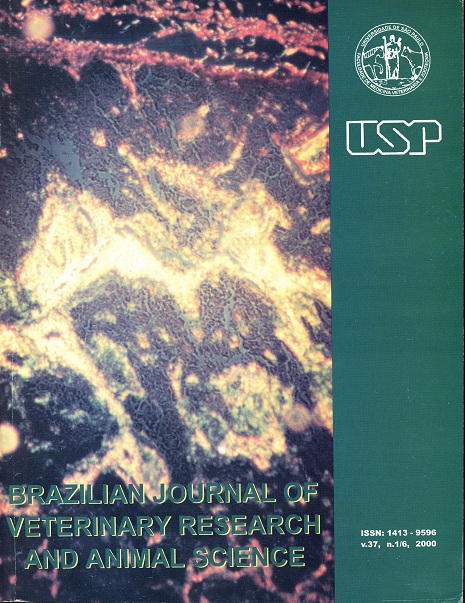Canine distemper: epidemiological findings of 250 cases
DOI:
https://doi.org/10.1590/S1413-95962000000200009Keywords:
Epidemiology, Distemper virus, DogsAbstract
A review of the number of dogs submitted for necropsy at the Department of Veterinary Pathology of the Federal University of Santa Maria, RS, between 1985-1997 has shown that 11.7% (250/2136) had lesions and inclusion bodies characteristic of infection by canine distemper virus (CDV). Most of these cases occurred during the winter months in dogs that were less than 1.5 year old, which were submitted by residents from the city of Santa Maria. Canine distemper is considered endemic in this city. Significant differences in susceptibility were not observed between males and females. Mongrel dogs were super-represented, but dolichocephalic breeds were more affected than brachycephalic ones. Distemper encephalopathy with typical CDV inclusion bodies, especially in astrocytes, was the main lesion and occurred in 82% of these cases. Eosinophilic inclusion bodies characteristic of canine distemper were also observed in epithelial cells of the urinary bladder (15%), lung (6%), stomach (3%), kidney (1%), and tonsil (0.5%).Downloads
Downloads
Published
2000-01-01
Issue
Section
VETERINARY MEDICINE
License
The journal content is authorized under the Creative Commons BY-NC-SA license (summary of the license: https://
How to Cite
1.
Headley SA, Graça DL. Canine distemper: epidemiological findings of 250 cases. Braz. J. Vet. Res. Anim. Sci. [Internet]. 2000 Jan. 1 [cited 2025 Feb. 17];37(2):136-40. Available from: https://revistas.usp.br/bjvras/article/view/5834





